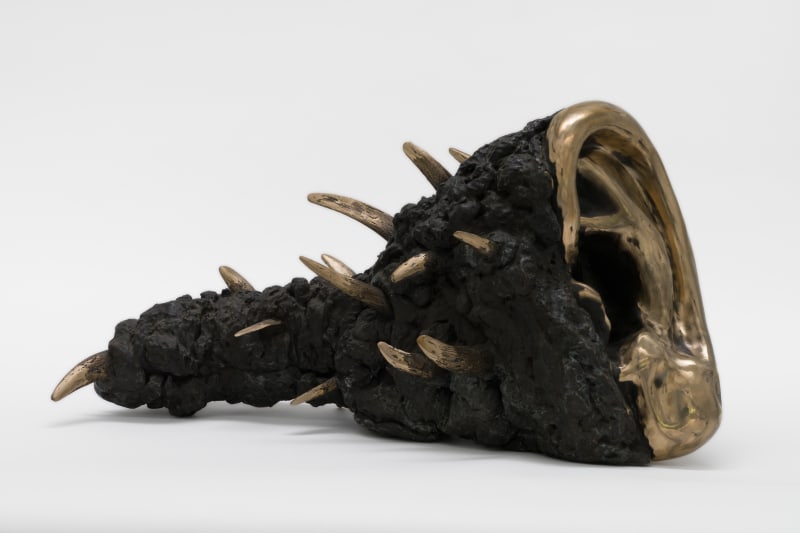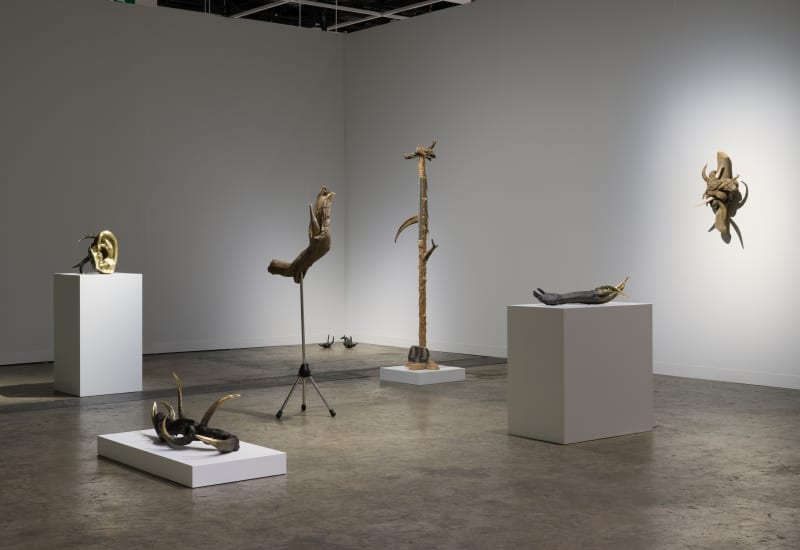
Jantsankhorol Erdenebayar
Biography
Jantsankhorol Erdenebayar's practice prominently draws on an acute awareness of his lineage. Delving into his ancestral ties to and personal memories of Mongolian tales, proverbs, riddles, and beliefs, he seeks to distinguish the lived and the individual from the fabricated and the authoritative. With his biotic sculptures and assemblages, Erdenebayar examines the act of resistance and the notion of reincarnation at various states of being, ultimately yielding a nurtured sense of reconciliation and hope within and beyond Mongolia's sociocultural milieu.
His work embodies intuitions of gradual yet irrepressible growth. Found materials across the Mongolian landscape - goat horn and discarded wood - foreground the challenging environment of the steppe as well as the limited resources and consumptions of the nomadic culture.
Jantsankhorol Erdenebayar (b. Ulaanbaatar, Mongolia, 1992) completed his Bachelor in Arts (BA) at City University of New York, Hunter College in 2015 and his Master in Fine Arts (MFA) University of California, Los Angeles in 2019. His works have been shown in numerous locations globally including BLUM, Los Angeles (2020), Frieze, New York (2020), Half Gallery, New York (2021), Art Basel Miami Beach (2021) & Red Ger Creative Space, Arts Council of Mongolia (2022).
In 2019, Erdenebayar represented Mongolian at the 58th Venice Biennale, Italy.
Flowers Gallery is delighted to present Jantsankhorol Erdenebayar at Art Basel Hong Kong, 2024.
In Hat-Trick (2023), appendages of salvaged objects thrust yet also strive for balance, while the seemingly barren supporting structures accommodate and nourish. Recalling survival coping mechanisms, the sculptures adopt curious, anthropomorphic forms to evoke both bodily and spiritual perceptions of history and evolution. They serve as metaphors for the delicate positioning of a culture confronted with rapid globalisation and a socio-economic landscape in constant flux.
The amalgamation of materials exhibiting drastically different qualities is also evident in the work Vigousse (2017). The head of a death worm, a creature in Mongolian folklores, is replaced with an ear, a plaster sculpture the artist retrieved from Mongolian Academy of Fine Arts whose ideologies have been heavily influenced by the Soviet regime. Additionally, Erdenebayar's use of the goat horn differs - it is an intricate cast of the interior capillaries and veins, resulting in a protruding yet tender form. The natural and the superstitious are coupled with the manufactured and the institutional to investigate the circulation of living traditions and the intrusion of alien doctrines. Here, the fabric of time is neither neutral nor static but manifests in a physical and ritualistic fashion.
Rendering the land of Mongolia as both a witness and a living organism, Erdenebayar embarks on a persistent and meditative journey of tracing and negating socially constructed taboos, habits, and epistemologies - one that posits resistance as invigoration.









